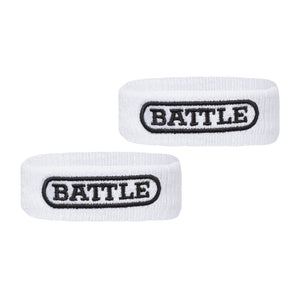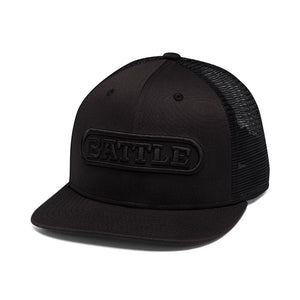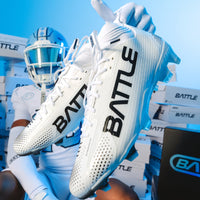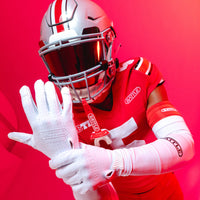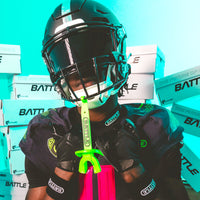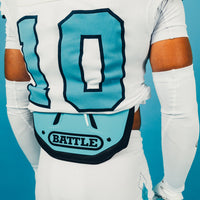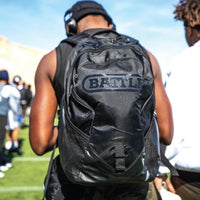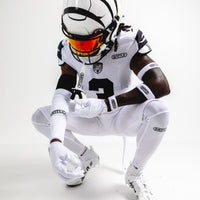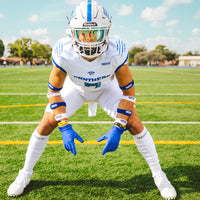New football shoulder pads feel like wearing a suit of armor, but breaking them in properly transforms that rigid protection into gear that moves with you naturally on every play. The difference between stiff, uncomfortable pads and perfectly molded equipment can make or break your confidence when you step onto the field.
This guide walks you through the complete break-in process: from checking your fit and running mobility tests to using safe techniques that preserve your pads' protective power. You'll learn position-specific tips, common problems to avoid, and exactly how long the process takes so you can get game-ready faster.
Why Breaking In Shoulder Pads Matters
Breaking in shoulder pads means wearing them consistently to soften the stiff materials and mold them to your body. With 8.7% of football injuries affecting the shoulder area, properly fitted and broken-in pads are essential for both performance and injury prevention.
New pads feel stiff because that structure provides maximum impact protection. However, as you wear them regularly, your body heat and movement gradually soften the foam padding, creating a custom fit that doesn't compromise safety.
What Proper Fit Looks Like
Before you start breaking in your pads, make sure they fit correctly from the start. Poor fit can't be fixed through breaking in and will compromise both your safety and performance on the field.
Your pads should feel snug but never restrictive, covering all critical areas without shifting during movement. Check these key areas for proper coverage:
- Shoulder caps -Should extend just past your shoulder to protect the AC joint without limiting arm movement
- Chest plate - Must sit over your sternum without riding up into your neck or restricting breathing
- Back alignment - Should lie flat against your shoulder blades without creating gaps
For best results, use a football shoulder pad sizing guide to confirm your size before beginning the break-in process.
Fit and Mobility Checks Before Break-In
Once you've confirmed your fit, test your range of motion to identify potential problem areas. These simple checks help you spot issues like pinching or binding before hitting the field.
Run through these checks while wearing your pads:
- Head movement - Turn side to side to ensure the collar doesn't dig into your neck.
- Arm circles -Raise your arms overhead and make full rotations to check shoulder flexibility.
- Position stances - Practice your specific position movements, like throwing, blocking, or backpedals to mimic actual gameplay.
- Torso twists - Rotate your core to make sure the pads move naturally with you without sliding or restricting motion.

How to Safely Break In Shoulder Pads
Breaking in pads should be gradual, allowing materials to adapt to your body without damaging protective components. No shortcuts, no heat tricks, just consistent wear and smart prep.
1. Warm Up Without Pads First
Start each practice with dynamic stretches to prepare your shoulder, neck, and back muscles after you've learned how to properly put on football gear. A proper warm-up preps your muscles to handle the added weight and bulk of the pads more easily once you put them on.
2. Lock In Proper Strap Tension
Secure all straps so pads sit snugly without restricting movement. You should be able to fit two fingers between any strap and your body for a secure but comfortable fit.
3. Wear Pads During Every Practice
The most effective break-in method is simple: wear your pads during all drills and training sessions. Your body heat combined with repetitive motion naturally softens the foam and allows it to mold to your unique shape over time.
4. Hand-Flex Stiff Areas
When your pads are off, gently work stiff spots with your hands. Carefully bend the shoulder caps and chest plates back and forth, but never force them so far that you risk cracking the plastic shells or seams
5. Practice in Game Conditions
Wear a practice jersey over your pads to get used to a full gear setup. Then run through position-specific movements to ensure the pads feel comfortable during realistic game situations.
6. Progress Contact Gradually
Start with non-contact drills and gradually move to full-contact sessions as comfort improves. This gradual approach allows the padding to adapt naturally through use rather than forcing the break-in process. The CDC recommends coaches reduce contact practices for player safety, making this approach beneficial for both equipment break-in and preventing injury.
Common Break-In Problems and Quick Fixes
Even with proper technique, you might encounter some comfort issues during the break-in period. But don’t worry, most problems have simple solutions that don't require new gear.
Here are the most common issues and how to address them quickly:
- Neck or collarbone chafing - Usually caused by a collar that's too high or straps that are too tight. Loosen connecting straps slightly and wear a compression shirt or any moisture-wicking base layer, following the guidelines on what to wear under football pads.
- Shoulder digging - Typically from overtightened side straps or cap misalignment. Just loosen straps and ensure shoulder caps are properly centered.
- Restricted breathing -Often from a chest plate sitting too low or tight. Try readjusting the straps to lift the pads higher on your torso, and adjust strap tension.
- Persistent stiffness - Results from inconsistent wear. All you need to do is increase practice time in full gear so your shoulder gets used to the pads.

What Not to Do When Breaking In Pads
Patience pays off. Trying to speed things up with shortcuts can permanently damage your pads. These damaging methods will eliminate their protective qualities and could leave you vulnerable to injury.
So, never attempt these harmful shortcuts:
- Heat exposure - Don't use heat guns, boiling water, or direct sunlight, which can warp plastic shells and ruin protective foam.
- Machine drying -Avoid clothes dryers or any artificial heat sources that can damage materials.
- Overtightening - Don't force the fit by cranking down straps beyond comfortable limits. This restricts movements and creates pressure points.
- Structural changes -Never remove padding or panels to “make them more comfortable.”
How Long Breaking In Takes
Most players find that their shoulder pads feel comfortable after one to two weeks of consistent practice wear. The exact timeline depends on your pad materials, position demands, and how frequently you practice.
Remember that you're creating a personalized fit that takes time to do properly. Take your time. Rushing the process often leads to poor fit, discomfort, and poor performance later in the season.
Position-Specific Break-In Focus
Different positions require different movement patterns, so your break-in approach should match your role on the field. Since head impacts are more common among linemen, proper shoulder pad break-in becomes especially critical for these positions to ensure maximum protection during high-contact situations.
Battle Sports’ Defender Lightweight Football Shoulder Pads and Phantom Youth Football Shoulder Pads are engineered for position-specific needs. Focus your break-in efforts based on your position:
- Quarterbacks and receivers - Focus on throwing and catching drills for full arm mobility.
- Linemen and fullbacks - Focus on blocking drills and low-stance comfort for leverage work
- Defensive backs and running backs:Prioritize agility movements like sprints, cuts, and backpedaling
- Youth players:Use shorter, lower-intensity sessions to build comfort gradually
Stay Game-Ready with Battle Sports Shoulder Pads
All shoulder pads from Battle Sports start at top-tier protection, and only get better with every wear. Our ergonomic shells, responsive padding, and moisture-wicking liners are engineered to mold fast and move clean, so you feel locked-in without feeling locked down.
Breaking in a new set? Upgrading your gear mid-season? Either way, Battle Sports’ shoulder pads hit the sweet spot: comfort, durability, and performance in one streamlined build. You get the freedom to open your stride, drop your hips, and finish plays—while your pads keep doing work underneath.
Explore Battle Sports shoulder pads as well as our complete lineup of innovative football gear built to move with you, play after play. Strap in, level up, and make every rep count.
FAQ
How long should I expect the break-in process to take?
Most players find their shoulder pads feel comfortable after one to two weeks of consistent practice wear.
How can I tell if my shoulder pads are the wrong size?
If your pads slide around, leave shoulders exposed, or restrict breathing even after proper adjustment, they likely need to be replaced with a different size.
Can I speed up breaking in with heat or water?
No, heat and water can permanently damage the protective materials and plastic components of your shoulder pads.
What should I wear under my pads to prevent chafing?
A snug, moisture-wicking compression shirt helps prevent chafing while ensuring your straps aren't overtightened.
Do youth shoulder pads break in faster than adult pads?
Youth pads often break in quicker due to lighter materials, but young players should still use shorter practice sessions to adapt comfortably.
Sources:
- Mikhail D, Sugimoto D, Tadros M, Van Pelt R, Radel L, Soma D, Ulman S, Miller S, Jones J. Injury differences between youth male and female American football players. Phys Sportsmed. 2025 Aug;53(4):337-344. doi: 10.1080/00913847.2025.2468632. Epub 2025 Feb 25. PMID: 39998429. https://pubmed.ncbi.nlm.nih.gov/39998429/
- Centers for Disease Control and Prevention. (2025, August 4). Comparing head impacts in youth tackle and flag football. Traumatic Brain Injury & Concussion. https://www.cdc.gov/traumatic-brain-injury/data-research/comparing-head-impacts/index.html


